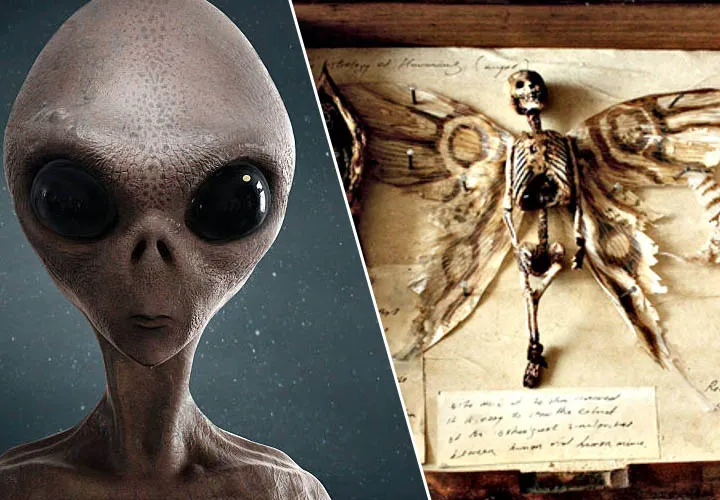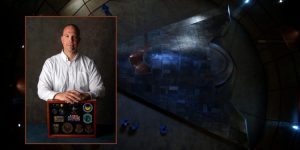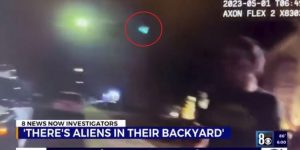The Strange Link Between Fairies, Aliens and UFOs

It has long been the habit of scholars to study the obscure, the strange, and the unusual. Aside from the intrinsic interest of such subjects, the fringes of human experience offer the widest scope for unexpectedly enlarging our collective knowledge.
Many common scientific subjects were once “fringe:” electricity, meteors and radioactivity were all once beyond the pale of standard knowledge. No scholar worth his salt would pass up an opportunity to write their name into history as a discoverer.
Robert Kirk was such a scholar. Born in 1644, Kirk came from a long line of educated men. His grandfather, John Kirk, was a notary and scrivener in Edinburgh, Scotland. His father, Reverend James Kirk, was appointed minister to the parish of Aberfoyle, in Perthshire, in 1639.
He had a large family, of whom Robert Kirk was his seventh son. Among the Celts, this was a propitious place to be born — seventh sons were commonly believed to have second sight.
Kirk never made a reputation as a seer, but he was exceptionally gifted intellectually. He studied at Edinburgh University and at St. Andrews, receiving his master’s degree at 17. Ordained as a minister, Kirk served at various parishes for the next twenty years. He married in 1678.
Kirk was also a linguist. He translated the psalms into Gaelic verse, and translated other religious works into the Scots Highland dialect. His facility with Gaelic led him to be named editor of a new Irish edition of the bible.
In June 1685 he was appointed to his father’s old parish of Aberfoyle, and served there until his early death in 1692. Aberfoyle was, in the words of Sir Walter Scott, “[a] beautiful and wild region, comprehending so many lakes, rocks, sequestered valleys, and dim copsewoods, and not even yet quite abandoned by the fairies, who have resolutely maintained secure footing in a region so well suited to their residence.”
His linguistic expertise would have been enough to insure Robert Kirk a footnote in the cultural history of the British Isles, but his real fame (and interest to readers of ParaScope) lies in his study of fairy lore. He collected tales of fairy encounters by his countrymen and analyzed them in a monograph entitled “The Secret Common-Wealth.”
In Kirk’s time, fairies were not seen as tiny, gauzy-winged creatures of children’s storybooks. Far from it — fairies were thought of as strange, powerful creatures, a paraphysical race of beings living among mankind.
It was common for some of the clergy to denounce fairy folk as demons, or at least servants of Satan. Kirk wasn’t so sure. He decided that they were a separate race “betwixt Man and Angel.” Lacking scientific language to describe fairy attributes, Kirk resorted to poetic descriptions. Fairies were made on “congealed Air” or “condensed cloud.”
This ethereal composition was crucial to their ability to vanish at will, fly, or penetrate any enclosed space, no matter how tiny. Being so nebulous, fairies imbibed only the most refined of “spirituous liquors” (Scotland being a good location for such), and Kirk noted that although they had prodigious appetites, fairies never grew fat because they only used the quintessence of food and drink.
Humans sometimes stumbled upon fairy banquets hidden away in the hills, but mortals should never partake of fairy food; one taste, and the luckless human was forever a captive of the Subterranean race.
An especially odd detail Kirk gives is that the fairies had a special class of servant at their revels, whom he describes as “Pleasant Children” or enchanted puppets, which sounds like the fairies were tended by mechanical dolls…
Fairy affairs curiously mirrored the situation of their human neighbors. When men experienced a good harvest, things were poorly in the fairy realm, and vice-versa.
Fairies lived in tribes and “orders” (medieval social classes), had factions, fought wars among themselves — sometimes in the sky, to the astonishment of mortal witnesses — and by custom had to move their homes at the beginning of each quarter of the year. These migrations were sometimes seen by psychically gifted Scots, and led to them being called “the crew that never rest.”

Fairy fashion echoed that of the country in which they lived. In Scotland, they wore plaid kilts, and in Ireland dressed like the Irish. Fairy women were the finest spinners and weavers in the world, making cloth as fine as cobwebs, which seems only fitting for a race made of congealed air.
They had no religion, but would flee when humans invoked God or Jesus. Kirk repeats the common belief that fairies fear and hate iron, and offers an unusual reason why: Hell, it seems, is a place so hot and terrible molten iron flows like water all over the place.
Being highly sensitive creatures, the fairies cannot bear even the smell of cold iron, as it reminds them of the fate that awaits them once they die… eternity in Hell.
Fairy relations with humans are always strange and often tragic. Time passes differently among the fairies. What seems like a few days or weeks in Elfland can be decades in the mortal world. Kirk’s informants told him of vast underground halls, lit by perpetual lamps, where hundreds of fairies feasted and roistered down the ages.
There were also more sinister aspects to human/fairy interactions. Most people have heard of changelings, where a human baby is taken away from its parents and a defective fairy child left in its place. But the Subterraneans did not balk at taking adults away too.
They particularly liked women who’d just given birth. They were kidnapped to serve as wet nurses to fairy babies. Interestingly, the fairies would leave exact doubles of their captives behind.
Kirk discusses these doppelgangers, who he calls “co-walkers,” in some detail. Like changeling infants, co-walkers tend to weaken, become incoherent, and eventually die. They’re not human or fairy, but a sort of biological robot created by fairy magic to distract mortals away from the truth about the abduction of their loved ones. UFO lore is full of co-walker types.

Many of the classic “men in black” episodes feature clumsy, muddle-mouthed visitors who don’t quite seem in sync with the mundane world. MIBs, like co-walkers, perform some task, then depart — though they don’t usually die in front of puzzled witnesses.
Kirk gives this account of one woman’s abduction:
“Among other instances of undoubted verity, proving in these the being of such aerial people, or species of creatures not vulgarly known, I add the subsequent relations, some whereof I have from my acquaintance with the actors and patients and the rest from the eyewitnesses to the matter of fact.
The first whereof shall be of the woman taken out of her child-bed, and having a lingering image of her substituted body in her room, which resemblance decayed, died, and was buried. But the person stolen returning to her husband after two years space, he is convinced by many undeniable tokens that she was his former wife, admitted her home and had diverse children by her.
Among other reports she gave her husband, this was one: that she perceived little what they [the fairies] did in the spacious house she lodged in, until she anointed one of her eyes with a certain unction that was by her; which they perceiving to have acquainted her with their actions, they fained her blind of that eye with a puff of their breath. She found the place full of light, without any fountain or lamp from whence it did spring.”
Kirk goes on to say the returned woman was undoubtedly the same one everyone thought had died, and that her husband, having remarried since her “death,” was obliged to divorce his second wife to remarry his first.
The scholarly minister’s interest in the Good People (as fairies were euphemistically called) proved unhealthy. Kirk’s monograph was finished in 1691. A short time later, after the minister returned from London to Aberfoyle, he went for an evening stroll in his nightshirt.
Kirk’s perambulations took him past a fairy mound near his home. While passing by the mound (or walking over it, according to some accounts), the 47 year-old scholar collapsed. He was found and brought home, but died soon after and was buried in the kirkyard of his own church.
Kirk’s death on or near a fairy mound must have made his parishioners shudder, but an even weirder postscript would be added to the case.
One of Kirk’s relatives was awakened in the night by the apparition of the dead minister. Kirk gave him a message for his cousin, one Graham of Duchray. I am not dead, Kirk’s specter declared. The Good People had carried him off.
He had one chance to escape their clutches: when Kirk’s posthumous child was christened (his wife being pregnant when he died), Kirk’s apparition would appear at the ceremony. Graham of Duchray was to throw an iron-bladed knife over the head of the minister’s specter.
Iron was a powerful counter to fairy magic, and Kirk would be released from their power by this act. (One wonders what would become of his corpse, buried securely in the Aberfoyle cemetery… but some folk in Aberfoyle claimed that Kirk’s body was abducted, not just his soul. His coffin, it was said, was buried with nothing in it but stones.)
The child was born, and duly christened. While the family dined afterward, Kirk appeared before them. Unfortunately, his cousin Graham was so thunderstruck by this vision he failed to throw his knife as directed.
Kirk’s spirit faded away, never to be seen again. Well into the twentieth-century people in Aberfoyle maintained that Robert Kirk was not really dead, but lived as an eternal captive in fairyland.
This kind of fairy lore echoes again and again through UFO literature. Strange time effects, odd, diminutive “people” with pointed features seen to occupy UFOs, traditional fairy gambits of borrowing mundane object from witnesses — and witnesses not being able to borrow “extraterrestrial” artifacts back — all are common facets of UFO close encounters.
Sometimes the fairy connection is so obvious as to be startling — as in the 1967 Long Island case where a contactee was given a seemingly ordinary metal disc to wear so that “they” would recognize her.
Who are “they?” asked the contactee.
“They are the very good people,” she was told. (See John Keel, The Mothman Prophecies, chapter 15).
If there is a strong link between fairy lore and UFO encounters, what does it mean? The crassly obvious view is that extraterrestrials have been visiting us for centuries, and in the past they were mistaken for elves and fairies.
This is a naive concept; more probable is the notion that modern encounters with strange beings are interpreted as contact with outer space folk whereas three hundred years ago such a meeting would have been seen as a visitation by the Good People.
It seems as though the phenomenon changes very little, but our perception of it changes a great deal. Our understanding of it all would be greatly enhanced if we could strip away the trappings of folklore, religion, and pseudo-science that continued to obscure the core facts.
And if at some future date we can recognize these experiences unburdened by medieval superstitions or cheesy science-fiction concepts of “aliens,” then perhaps we’ll know our visitors for who they truly are. Maybe then they’ll cease to trouble us, and cease to be “the crew that never rest.”




